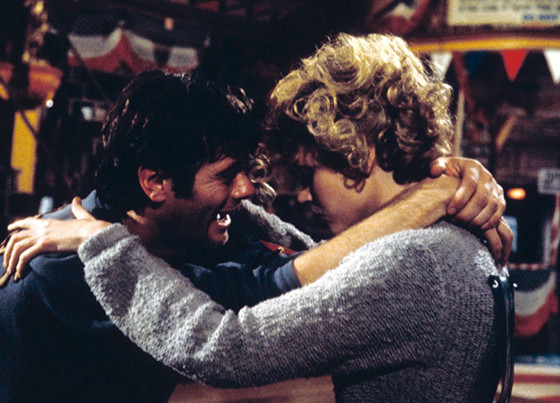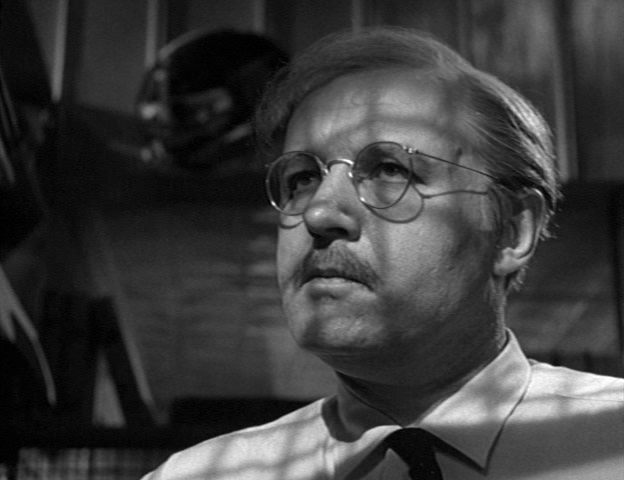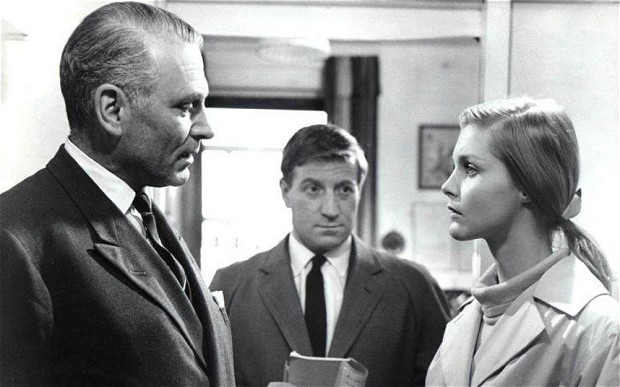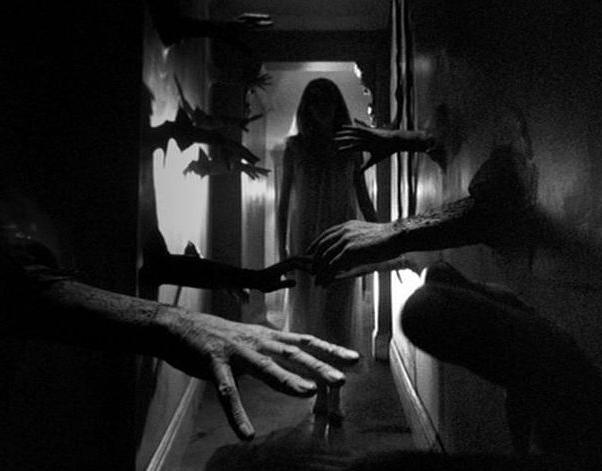6. They Shoot Horses, Don’t they? (1969, Sydney Pollack)

“Yowza Yowza Yowza!” is embittered carnival barker Gig Young’s intermittent battle cry to the anguished contestants of a depression era dance-for-your-life marathon. This is their last chance for food, lodging and a possible monetary prize to the last one standing.
Sydney Pollack takes us through the Atlantic City marathon as a medieval spectator sport through Dante’s hell in one of his earlier directorial efforts. While films like The Way We Were and Tootsie are generally connected to Pollack, They Shoot Horses is inexplicably relegated to obscurity when discussing the pantheon of Pollack’s work.
Jane Fonda (in an Oscar nominated role) plays Gloria Beatty, an unemployed actress whose sense of hope and wonder have long since been replaced by virulence and betrayal. She’s still maintains her will to survive as she enters the contest along with a seemingly indifferent Michael Sarrazin as her dance partner. Together they weather the body aches and the incomprehensible exhaustion as they compete for survival amongst the bevy of similarly desolate and half-crazed contestants who are all too enervated to even feel humiliation.
When the action seems to be lagging, the contestants are forced to perform “The Derby,” a contest within a contest where they have to race around the ballroom disqualifying the three couples who come in last. Shot as Grand Guignol theater, Pollack films the action in slo mo focusing on every agonized expression. When Fonda wails “I’m tired of losing” we know that’s a summary of a lifetime.
The title clues us in on the film’s direction and yet the nihilism isn’t surprising and fits with the hamster on a wheel allegory for the futility of capitalism. Rat race indeed.
The film received many Academy Award nominations including one for Pollack for best director and a win for Gig Young for supporting actor.
7. Duel (1971, Steven Spielberg)

What monster could be more frightening than anonymity? The foe we don’t understand is exponentially more terrifying than the one we do. Especially if he’s chasing us with a massive Peterbilt. Steven Spielberg’s first full length directing job was for the TV movie, Duel.
Based on the epic sci-fi writer Richard Matheson’s short story, Duel is the simple story of an everyman, with a name to go with it, David Mann (Dennis Weaver) who innocently passes a truck on a California highway. In the worst case of inexplicable road rage ever, the homicidal truck driver stalks him relentlessly. That’s it.
The beauty is in the simplicity and the suspense never lets up. Neither Mann nor the audience see the driver giving the impression of some alien prehistoric ghoul appearing out of the mist with the sole intent of murder. The unknown identity of the driver and the whole raison d’etre bring Mann close to hysterics culminating in a nerve-wracking diner scene. Many truckers are there to eat lunch. Which one is he?
The cinematography focuses on the long monotonous highways, highlighting the bleakness. The ugliness of the Peterbilt, a rusty, ungainly colossus is so menacing, it looks to actually have an evil face head on. Spielberg explained that the truck’s variety of out of state license plates is an ode to each kill. The unsettling end scene sound effects will be familiar to Jaws fans. Those early Spielbergian touches let us see the emerging genius.
8. The Pawnbroker (1964, Sydney Lumet)

Sydney Lumet has shown us time and time again the existential battle of a fight against a functioning system: Al Pacino in Dog Day Afternoon and Serpico, Henry Fonda in Twelve Angry Men, William Holden in Network, Paul Newman in The Verdict. In The Pawnbroker, Sol Nazerman’s nemesis is life. He is a broken man. All hope and joy has vanished long ago as he’s now held together by vitriol, acrimony and apathy; junk parts held together like the rubbish his customers attempt to sell him.
Nazerman (an incredible performance by the Oscar nominated Rod Steiger) runs a pawnshop in Harlem. Leveled by the loss of his wife and children in the Holocaust, he survives only to make money; any human feeling has been excised long since. Various miscreants, junkies and eccentrics patronize his shop while attempting the smallest connection with him. He rebuffs all. Including his young shop assistant, who idolizes his business acumen and begs for his tutelage.
The bleakness is highlighted by black and white and a dramatic score by Quincy Jones. When the nihilism seems too much to bear, the denouement gives us a flicker of humanity. If not completely cathartic, we see Nazerman’s emotions return. The gut-wrenching finale was modeled after a famous painting.
9. Bunny Lake is Missing (1965, Otto Preminger)

Bunny Lake is Missing is odd. The woman is odd. Her brother is odd. The landlord is odd. The schoolteachers are odd, and so is the school. There’s a creeping maleficence that runs through each frame, despite its swinging London setting. And while obscure, it’s a memorable and suspenseful offering from Otto Preminger. As far away from Laura and Anatomy of a Murder as you could get.
A pre-Poseidon Adventure Carol Lynley, plays Ann Lake, an American expat who just moved to London with her over-protective brother, Steven (Keir Dullea.) When Ann goes to pick up her pre-school age daughter at school, no one has seen her. The child’s very existence comes into question as does Ann’s sanity. Is she a figment of her imagination? Both Ann and Steven seem a tad unhinged which makes the outcome unpredictable.
The standout here is a fantastically reversed Lawrence Olivier playing the superintendent assigned to the case. When he politely questions Ann over drinks, his gentle veneer eclipses his ambition: we know he’s sizing her up and determining her fate with each question. Noel Coward as the fey yet lecherous landlord with a whip obsession rounds out the cast.
10. Repulsion (1965, Roman Polanski)

Before his megahit Rosemary’s Baby, Roman Polanski gave us mayhem and madness in the first prong of his apartment-life-is-hell trifecta with Repulsion (the third installment being The Tenant in 1976.) Far less discussed than Rosemary’s Baby and Chinatown, Repulsion could be his finest hour with his story of a young woman’s steady descent into psychosis and violence.
Catherine Deneuve plays Carol, an almost mute assistant manicurist living in London with her sister. Her exquisite beauty triggers a myriad of unwanted attention as she retreats more into her own world with each frame. She becomes intolerant of any physical contact with men (hence the title) and grows increasingly disgusted by any man in her vicinity. When her sister leaves on vacation, Carol’s loses even her tenuous grip on reality. Her hallucinations of hands coming out of walls, cracks in the ceiling, and sexual molestation envelop her as she remains prisoner of the sepulchral apartment.
We’re voyeurs to Carole’s mental illness and the claustrophobia within her disturbed mind is suffocating. Yet, despite her inevitable plunge into violence, we are worried for her. Polanski subtlety gives us clues but no answers as to the origin of Carol’s madness. The money shot, however, is a spine tingling final photograph that may give some explanation. And may not.
Author Bio: Jill Gettelson is a Gen Xer with a fanatical love of 70s films. She is working on her blog about 70s horror as we speak. She lives in Los Angeles.